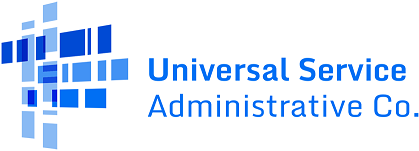Beneficiary and Contributor Audit Program (BCAP)
USAC is committed to collecting universal service contributions and disbursing payments to program beneficiaries that are accurate, properly documented, and in compliance with rules established by the Federal Communications Commission (FCC).
The Beneficiary and Contributor Audit Program (BCAP) is designed to measure rates of program compliance among universal service beneficiaries and contributors. USAC utilizes audit approaches tailored to both the distinctive features of the participant’s organization and the specific amounts of money being audited.
Carried out by auditors trained in universal service contributor and program audit requirements, these audits serve to identify areas of non-compliance with program rules and amounts of recoverable funds. The audits are designed and conducted so as not to impose undue demands in time or energy on program participants. USAC worked closely with the FCC to develop and implement this program.
Overview
The primary purpose of audits is to ensure compliance with FCC rules and program requirements (the Rules) and to assist in program compliance. Audits can be randomly selected or targeted to include a wide variety of entities with regard to size and geographic location. Selection for an audit does not necessarily indicate that USAC believes problems exist.
Beneficiary and service provider audits may be performed by USAC’s internal audit staff, the FCC Office of Inspector General, offices of other federal agencies, or a firm under contract to USAC or the FCC. Contact USAC’s audit team via email if you have any concern as to the proper identity of an individual contacting you regarding an audit.
An announcement letter is sent detailing the purpose and scope of the audit, identifying the personnel who will be performing the audit, requesting pertinent documentation, and stating the date upon which the documentation is due. Typically, a beneficiary will be contacted by USAC two to three weeks prior to the start of an audit to assure that the appropriate personnel and documentation will be available. The anticipated duration of an audit can vary depending on the size and dollar value of the support involved.
How USAC Conducts Its Audits
USAC obtains documentation to support different elements for each program.
- High Cost program:
- Eligibility requirements
- Line count submissions
- Data submissions
- Lifeline program:
- Number of subscribers reported on the FCC Form 497
- Amounts reported on the FCC Form 497
- Beneficiary eligibility to receive Lifeline program support
- Subscriber eligibility to receive Lifeline program support
- Lifeline program support passed through to subscribers
- Adequacy of advertising efforts
- Rural Health Care program:
- Health care provider (HCP) eligibility
- Competitive bidding process
- Payment of non-discounted portion/ reimbursement
- Amounts invoiced to the Rural Health Care program
- Delivery or installation of eligible products and services
- E-Rate program:
- Applicant eligibility
- Competitive bidding process
- National School Lunch Program (NSLP) discount calculations
- Disbursements
- Children’s Internet Protection Act (CIPA)
- Delivery and/or installation of eligible products and services
- Technology planning, as appropriate (Funding Year 2014 and previous years)
- Contributors:
- Completeness of revenue
- Block 3 reporting
- Classification of products
- Jurisdiction allocation
- USF recovery charges and associated reporting
To prepare for an audit, you should have documentation readily available for the auditors. For each program, we’ve prepared a document list:
- High Cost program documentation
- Lifeline program documentation
- Rural Health Care program documentation
- E-Rate program documentation
- Contributors documentation
Audit Reporting
A USAC audit may identify conditions categorized as an audit finding or an “other matter.” An audit finding is a condition that shows evidence of noncompliance with FCC rules and orders set forth primarily in 47 Code of Federal Regulations (CFR), as well as other program requirements (collectively, the Rules). An “other matter” is a condition that does not necessarily constitute a Rule violation, but warrants the attention of the auditee and USAC management. The audit findings and “other matters” will contain background information, the audit step performed, the condition noted, and the basis for the condition noted. After the audit is completed, an exit conference will be held with the auditee to review the audit results and discuss the next steps of the process.
The auditee will be given an opportunity to provide a response to the audit findings and “other matters” (if any) within five business days – unless advised otherwise by the auditor. USAC management will review the auditee’s response, prepare a response to address the conditions, and note corrective actions as necessary.
Both the auditee and USAC management responses will be incorporated into the draft audit report and submitted to the FCC to be deemed final. Once finalized, the auditee will receive a copy of the final audit report. The final audit report may be made available to the public upon written request.
Audit Findings
View lists of common USAC audit findings for each USF program (Lifeline, RHC, E-Rate, High Cost, and Contributors) on our website.
Our audit team regularly assesses completed audits to determine the root cause for these findings. With preparation and proper documentation throughout the year, audit findings can be minimized.
Take the following steps to minimize audit findings:
- Document, document, document. Retain appropriate and adequate documentation to support filings, eligibility requirements, data, etc. FCC rules require most beneficiaries to keep documentation for a set number of years (e.g. five years from disbursement).
- Get organized. Logically organize your documentation and filings so that transition of responsibilities is seamless.
- Provide sufficient detail on all bills, invoices, and communications with vendors/applicants.
- Review reported data for accuracy prior to submitting it to USAC. Check specific data, not just summaries.
- Ask questions about documentation, data, or program requirements. Use USAC as a resource throughout the year.
- Report data in a timely manner.
If you have any questions, contact USAC’s audit team via email.
See common audit findings for each USAC program.
Connect with USAC’s Audit Team if you have questions.
